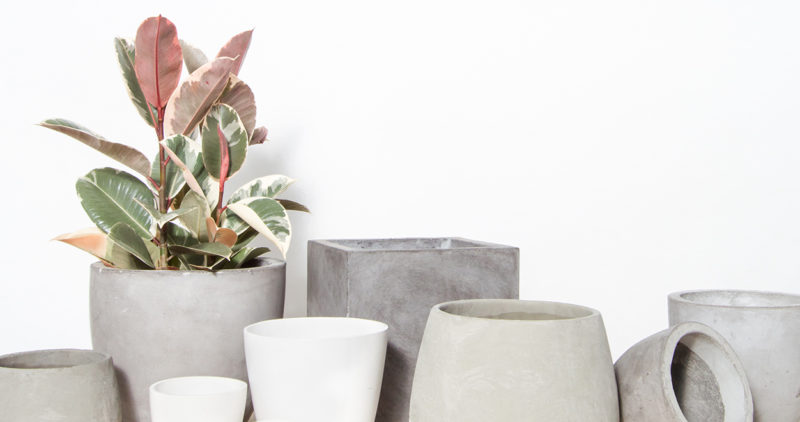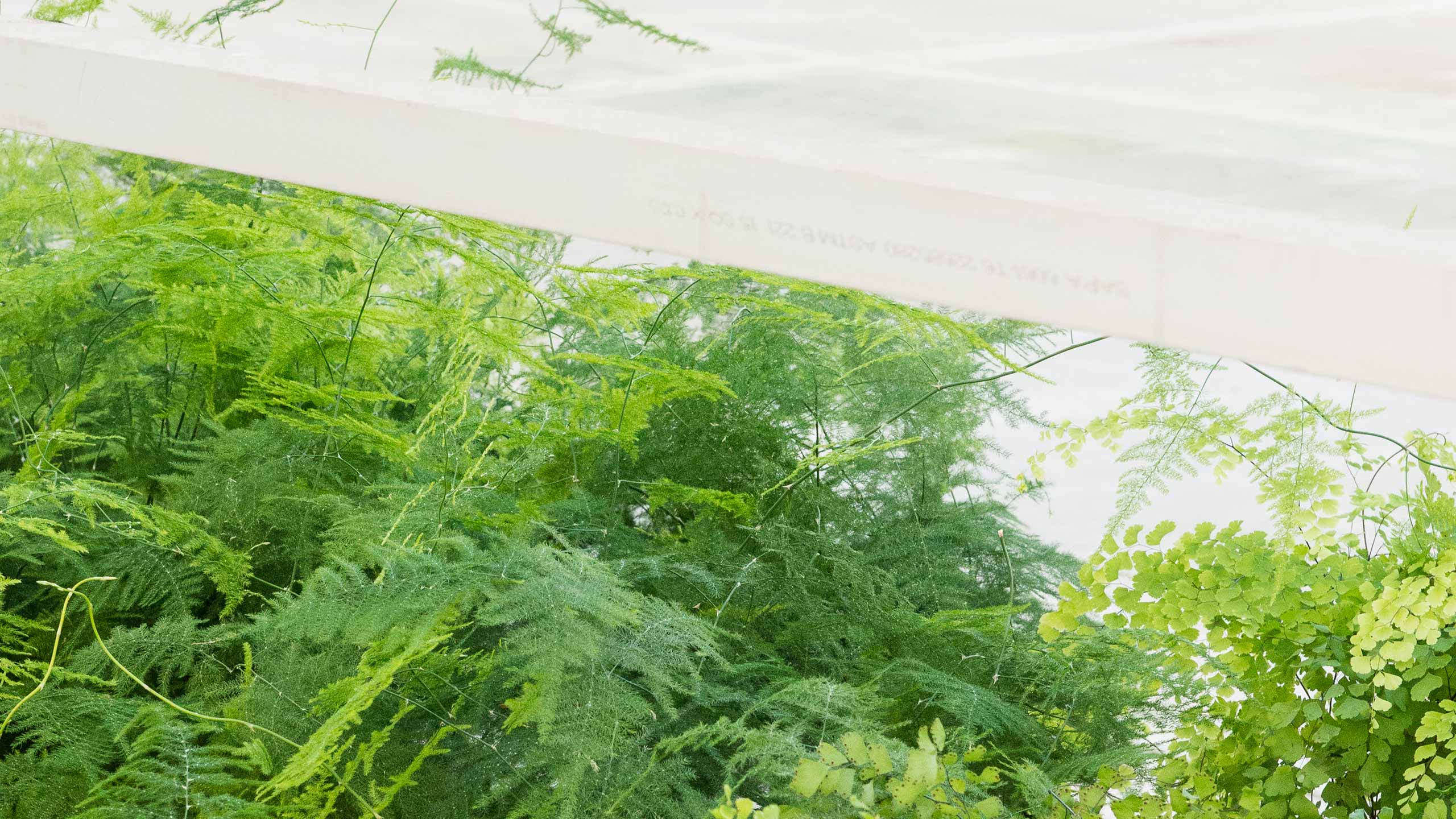
Ferns are some of the most graceful and intriguing plants we can have in our homes. Their variety of intricate leaf forms and growth habits make eye-catching additions to any collection of typically green and broad-leafed houseplants. Botanically, ferns are a group of non-flowering plants belonging to the plant division Pteridophyta, and they reproduce by means of spores, rather than seeds. Ferns are an ancient group of plants – their ancestors originated over 300 million years ago, long before the appearance of flowering, seed-bearing plants.

Like most plants, ferns have roots, stems, and leaves, but in ferns, these parts are arranged a little differently than in other types of plants. As the New York Botanical Garden describes it, a fern can be described as an erect plant that’s lying down on its side. A fern’s stem structure is actually a rhizome that runs under the surface of the ground. From this rhizome, the roots extend down into the soil, and the leaves – or fronds – extend above ground. Each frond is made up of a central leaf stalk with a number of leaflets attached, giving most ferns the classic dissected leaf structure that they’re known for.
Most ferns are found in the warm and humid tropical areas of the world, but some can be found in cooler regions too – they’re a highly variable group. Among the thousands of fern species that exist, we can find a stunning array of sizes, colors, textures, forms, and habitats. Fortunately for us, some ferns have adapted to an indoor life that’s remarkably different than their natural surroundings. Our team member Jasmine Osten brings all the wonderful tropical plants into our greenhouse. She’s well-acquainted with the unique qualities of ferns and the ways we can make them feel at home in our own spaces. With Jasmine’s guidance, we’ve divided our ferns into groups based on their overall appearance, but slight differences in care exist between the groups too.
Low, Mounding Ferns
In our collection, this group of ferns includes rabbit’s foot fern (Davalia fajeensis), East Indian Holly fern (Arachnoides simplicior), and an Asplenium hybrid, ‘Austral Gem.’ Each of these ferns produce abundant glossy green fronds giving them a full, rounded form. The fronds are triangular in shape with dissected leaflets that give these ferns a classic “ferny” look. Also included in this group is button fern (Pellaea rotundifolia). It shares the full, mounding form with the others, but its dark green leaflets are circular or oval, like rows of buttons along the leaf stalks. And on the rabbit’s foot fern, look for the fuzzy white rhizomes that give it its name – they grow above ground and even creep over the side of the container. As ferns go, these low-growing varieties are some of the most tolerant to the cooler, drier environment found in our homes. Jasmine says they prefer lots of bright, indirect light and consistently damp – but not soggy – soil. For a beginning fern collector, this group is a good place to start.
‘Broadleaf’ Ferns
While most ferns show some level of leaflet dissection in their frond structure, some do not. Staghorn ferns and bird’s nest ferns are members of this group. Both have wide, strap-like fronds that rise up above the soil and then arch over, but each has its own unique characteristics. Bird’s nest fern (Asplenium nidus) has bright green fronds that grow in a spreading rosette resembling a nest. Staghorn fern (Platycerium bifurcatum) grows two different kinds of fronds. The taller fronds are showier, with a soft, silvery-green color. Below them, a set of circular brown fronds – called a “shield” – protect the root ball. Like most ferns, both bird’s nest and staghorn ferns enjoy bright, indirect light and consistently hydrated soil, but they can tolerate short periods of slight dryness. They’ll also tolerate the typically low humidity levels found indoors, so like the low-growing ferns, they’re a good choice for beginning fern growers too.
Pteris and Maidenhair Ferns
The ferns in these two groups have an intriguing variety of heights, colors, and textures. They’re more delicately structured than the ferns above, some with papery-thin leaflets that seem to float in the air. In exchange for this lovely display, they do ask for more attention than other ferns, and have a narrower tolerance range for certain aspects of their environment. It’s worth the extra effort though when you see the fine structure and texture they bring to your plant collection. Pteris ferns – the name is both a common name and the genus name – are a popular fern for plant collectors. Their open, airy fronds have long, ribbon-like leaflets on tall leaf stalks that rise high above the pot and then arch gracefully downward. Many cultivars, like ‘Silver Lace’ and ‘Silver Frost,’ have interesting bands, stripes, and other variegations along the leaflets. The different varieties of Adiantum raddianum, or classic maidenhair ferns, are even more delicate than Pteris ferns in their appearance and care requirements. These beautiful ferns must stay well-hydrated at all times, so be sure to keep their soil consistently damp but not overly-soaked. They like extra humidity in the air too. If your bathroom has a bright window or skylight, they’d thrive there. In other rooms, you can raise the humidity level around your maidenhair by sitting it on a shallow tray filled with pebbles and enough water to fill in around the pebbles but not soak the bottom of the pot. Other ferns in the maidenhair group include Adiantum peruvianum ‘Silver Dollar’ and Hemionitis arifolia, a sweet little fern with charming heart-shaped leaflets.
Non-fern “Ferns”
In our collection, we also have plants whose delicately dissected foliage has earned them the common name “fern,” but who aren’t true ferns botanically. These “ferns” are actually flowering plants, and they produce seeds – although their flowers are usually very small and inconspicuous. Their finely textured foliage makes them popular indoor houseplants as well as interesting additions to outdoor annual containers. The most recognizable fern in this group is the classic asparagus fern, or Asparagus densiflorus ‘Sprengeri.’ Asparagus fern produces dozens of slender, arching stems covered in thin leaves that give it an almost conifer-like appearance. Its full, cascading form makes it a great choice for hanging baskets. Another cultivar of this species, ‘Meyeri,’ is commonly called foxtail fern. Like the asparagus fern, foxtail fern is a full, finely textured plant, but its stems stand more upright, looking a lot like bottle brushes. Another closely related ‘fern,’ Asparagus setaceus, has very soft, triangular shaped leaves that grow along long, thin stems. The leaves are so finely dissected they look like downy feathers, giving A. setaceus the common name plumosa fern. And finally, ming fern, or Asparagus macowarii, arranges its wispy fine foliage into dense, round tufts that set it apart from the other plants in this genus. Like true ferns, the plants in this group prefer lots of bright, indirect light when they’re indoors. But, unlike the true ferns we’ve talked about, these non-fern “ferns” are more accepting of drier soil. You can let the top inch or so of soil dry out a bit before giving them a thorough drink.
Maybe ferns don’t fall into the category of houseplants you can “almost” forget like we talked about on the blog a couple weeks ago. But, the variety of textures, forms, and colors they provide make the extra attention all worth it. We hope you’ll come visit our fern collection, and if you have any questions, just ask one of our team members. We’d be happy to help you select one of these intriguing plants to add to your own growing collection.


